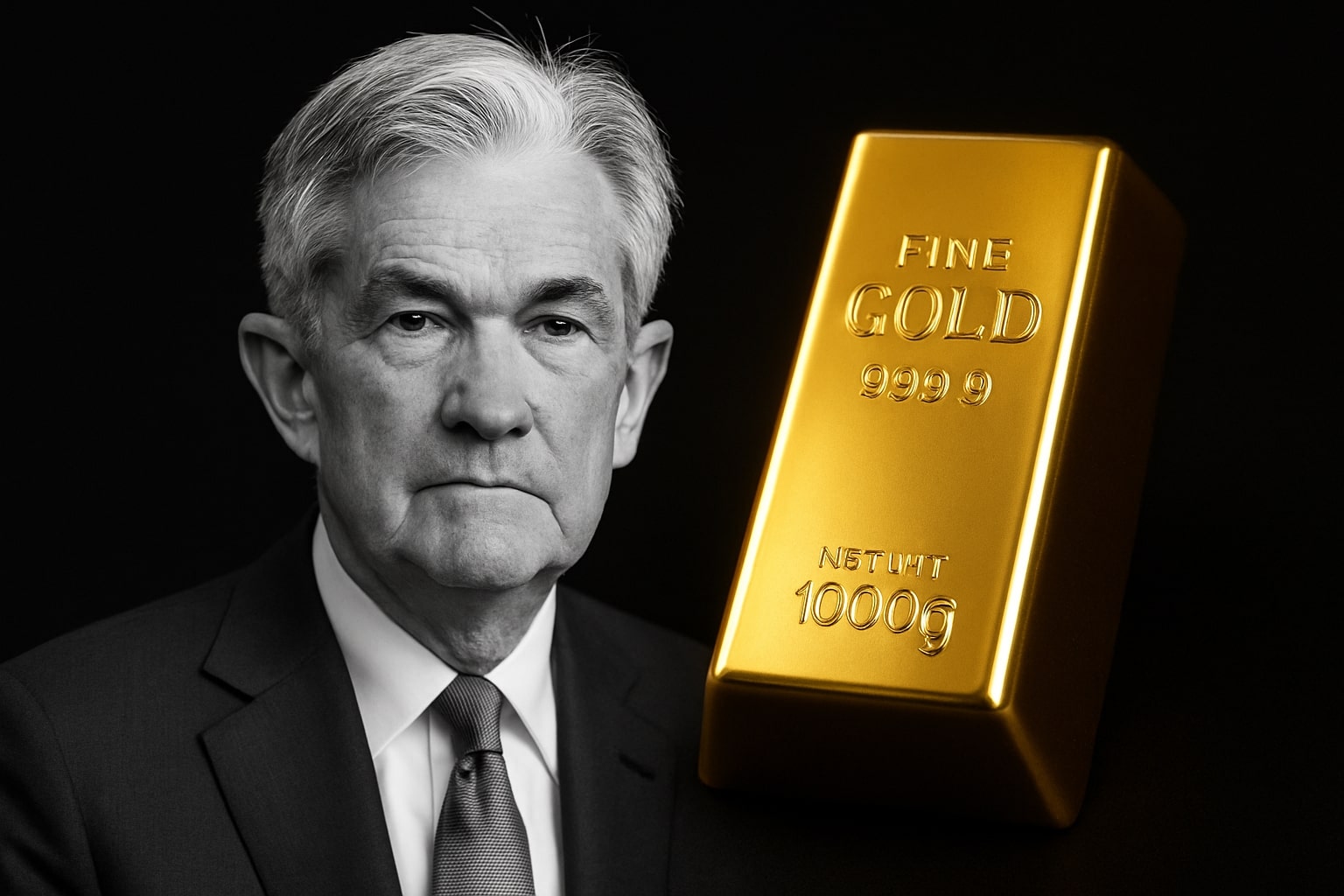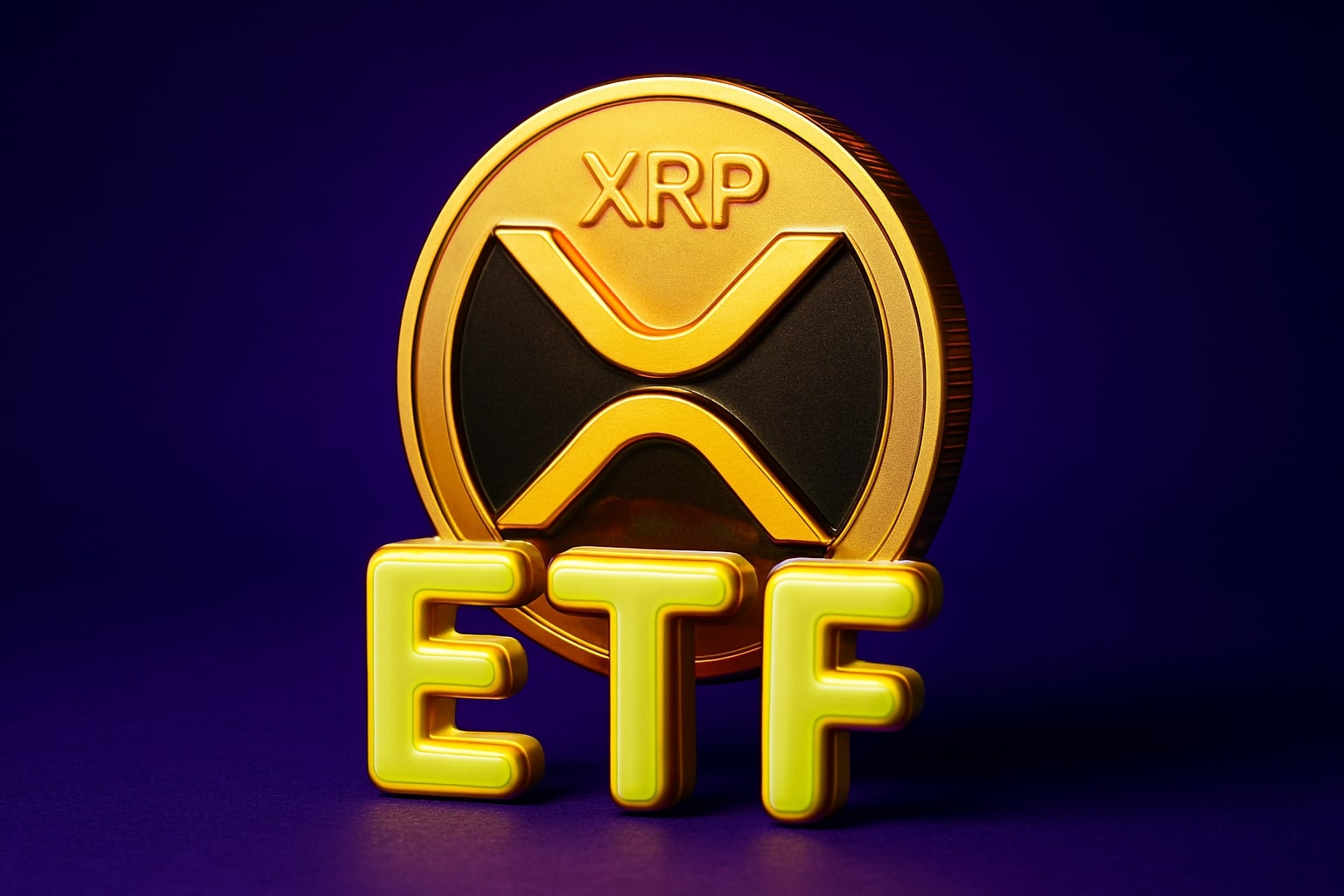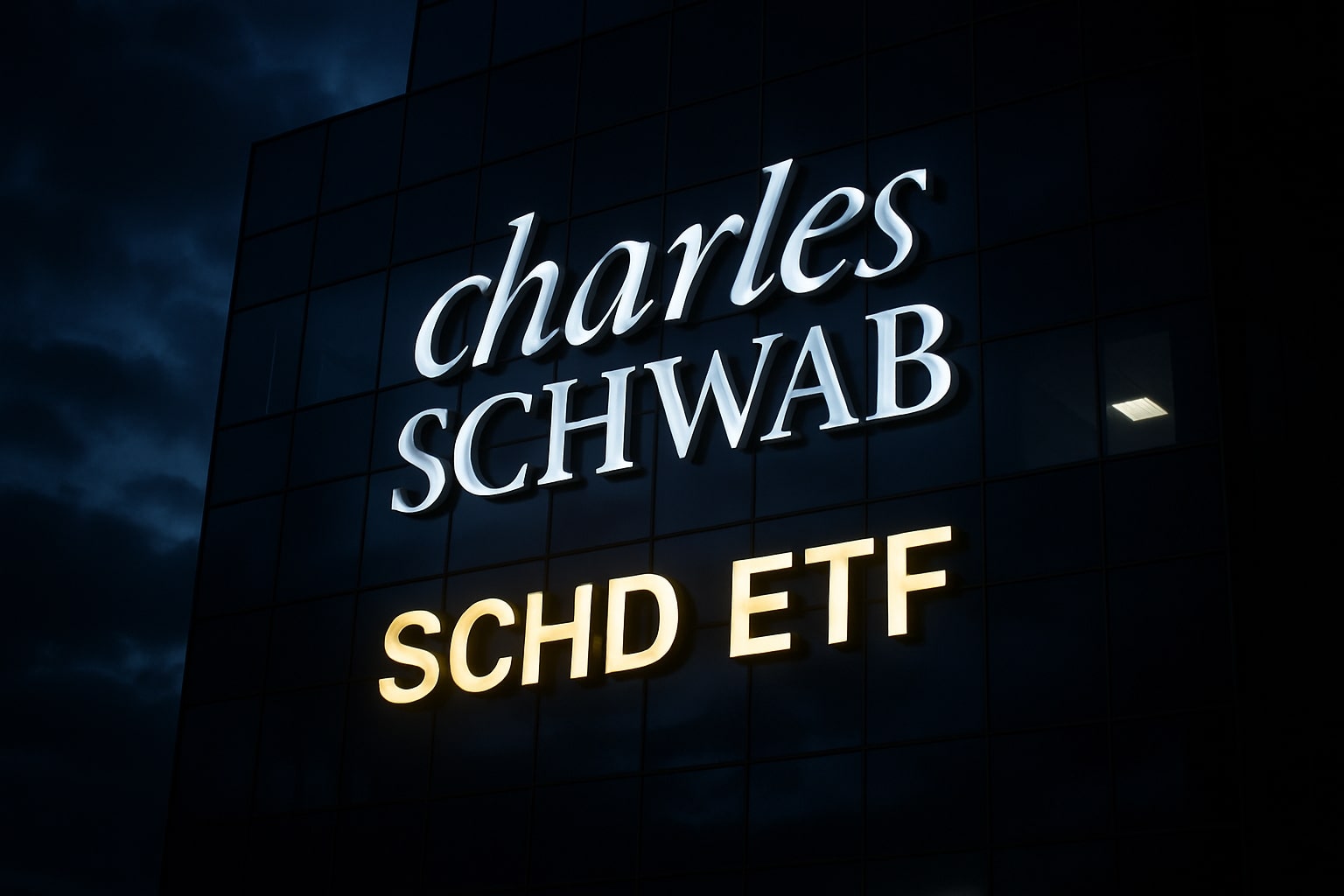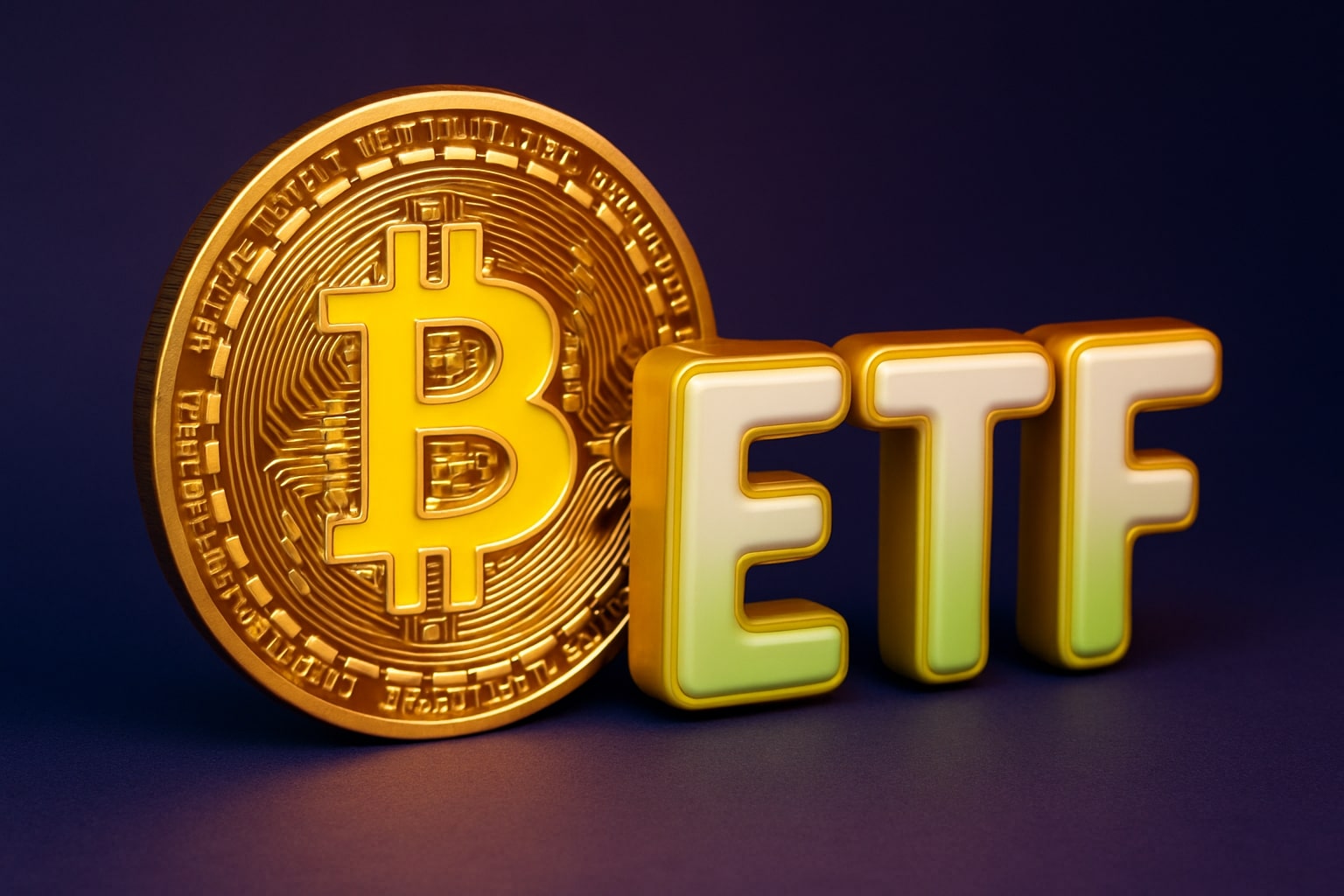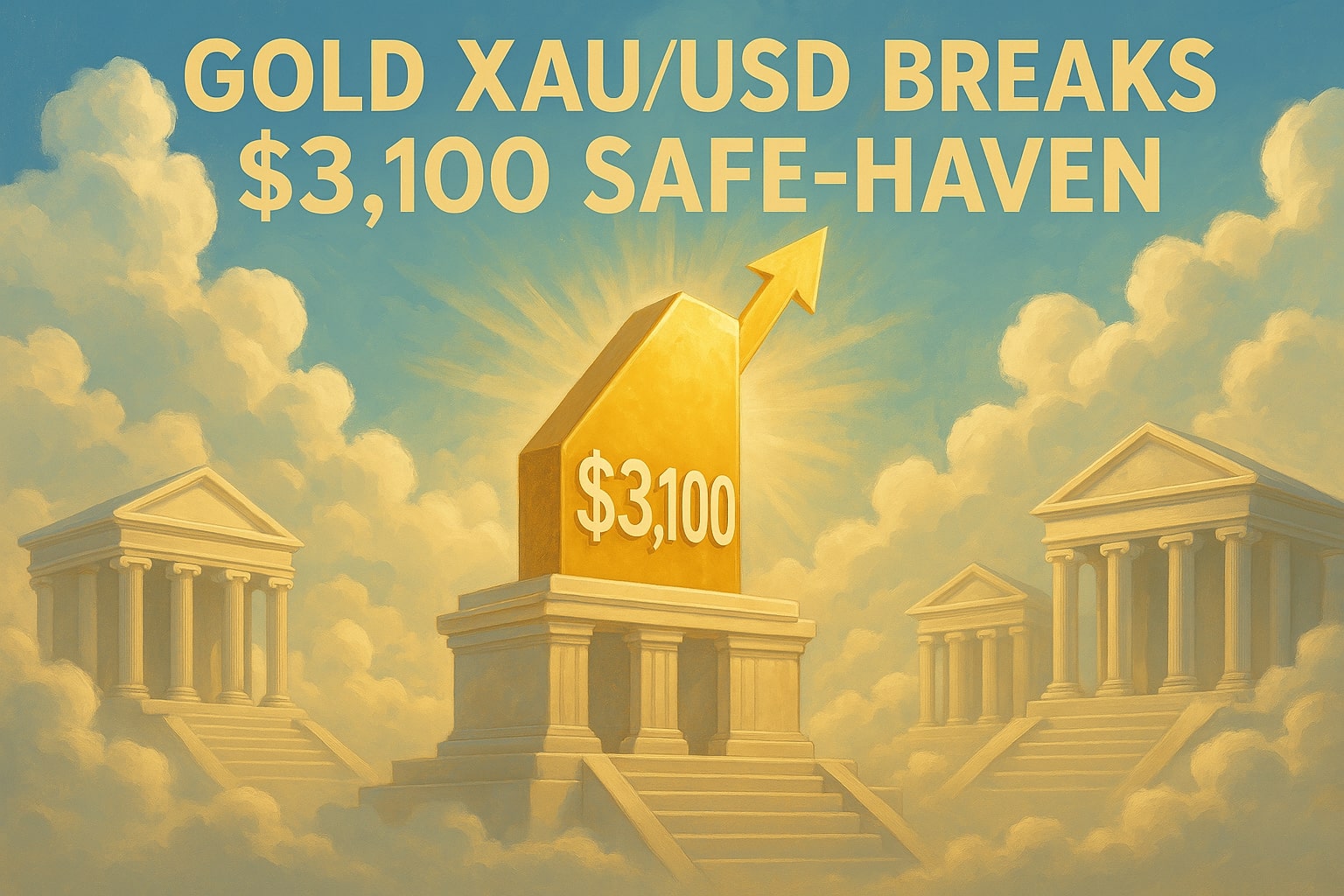
Gold's Next Big Move: Will XAU/USD Smash Through $3,100 Amid Global Tensions?
With XAU/USD testing the $3,100 resistance, could escalating trade wars and a weakening dollar push gold to new all-time highs? | That's TradingNEWS
Gold Price Movement and Market Analysis
Gold prices, represented by XAU/USD, have experienced significant fluctuations recently, largely driven by global trade tensions and economic fears. As of the latest data, XAU/USD is hovering around $3,094.10, just below the $3,100 mark. The price surged by $100 on a day that saw the return of risk-aversion trading, primarily due to the intensifying U.S.-China trade conflict. The situation began to unravel after U.S. President Trump announced a drastic 104% tariff on Chinese imports, escalating fears of a global recession.
The U.S. dollar's weakness has been another major factor driving gold prices higher. The Dollar Index (DXY) has fallen by 0.7%, making gold a more attractive investment for non-dollar holders. As the U.S. dollar continues to depreciate, gold’s allure as a safe-haven asset increases. This dynamic is compounded by worries over global economic stability, further bolstered by the tariffs imposed by the U.S. and the retaliatory actions from China.
Trade War Impact on Gold Prices
The escalation of the trade war between the U.S. and China, particularly the 104% tariff on Chinese goods, has pushed global markets into turmoil. Gold, as a traditional safe-haven asset, has benefited from the rising geopolitical tensions. As investors look for stable stores of value, demand for gold has surged. In times of trade wars and economic uncertainties, precious metals like gold tend to outperform due to their perceived stability.
On the technical front, gold has been testing critical resistance levels around $3,062.20. If XAU/USD manages to break this resistance, it could open the path for further gains, possibly pushing toward $3,100 or even new all-time highs. Traders are keeping a close eye on this level as a breakout could signal the continuation of the bullish trend, with analysts eyeing the $3,167.57 resistance level, which represents a new record high.
Federal Reserve and Market Sentiment
The bond market selloff and speculations about the Federal Reserve’s (Fed) next steps have also played a crucial role in shaping gold’s price movement. With expectations that the Fed could lower interest rates to stabilize financial conditions, gold becomes increasingly attractive. The expectation of rate cuts—with a 60% probability of a cut as early as May 2025—has created an environment where gold can thrive, particularly as non-yielding assets like gold tend to do well in low-interest-rate environments.
Analysts are forecasting continued growth in gold prices. The global economic and political landscape remains highly uncertain, with concerns about inflation and slowing economic growth. As a result, gold continues to serve as a hedge against these uncertainties. The Fed's potential policy shift, especially regarding interest rates, will remain a key driver of gold’s trajectory.
Key Support and Resistance Levels for Gold
As of the latest data, gold is trading above $3,000 per ounce, with immediate support near $2,998. The critical resistance level for gold is around $3,046, and a breakout above this level could potentially propel the price towards $3,100 or even higher. On the downside, if gold fails to hold the support at $2,998, it could drop back towards $2,950 and $2,930. The market's ability to hold above the $3,000 level is crucial for maintaining bullish momentum.
For traders, the ongoing fluctuations in XAU/USD offer multiple entry points. The technical outlook remains positive, with gold holding above key moving averages like the 200 EMA and 50 EMA, both of which are currently sloping upward, indicating a continuation of the bullish trend. The RSI is neutral, suggesting room for further upward movement, although some consolidation or minor correction may occur before gold resumes its ascent.
The Role of Gold in Today’s Market
Gold’s role as a safe-haven asset has never been more pronounced than in times of economic and geopolitical uncertainty. The market’s increased reliance on gold is evident as tariffs and trade tensions continue to escalate. The recent rise in gold prices demonstrates the metal’s unique position in the market as a store of value, particularly when confidence in other financial assets begins to waver.
The growing fears of a global recession, combined with the uncertainty surrounding U.S. monetary policy, have significantly boosted gold’s demand. The World Gold Council has noted that gold-backed ETFs have seen their strongest quarterly inflows in three years, further affirming the metal’s safe-haven status. As global economic conditions remain volatile, gold is expected to maintain its appeal, particularly if inflationary pressures continue to build and central banks remain cautious.
Silver’s Correlation with Gold
Silver, often tracking gold’s price movements, has also seen an uptick. Silver prices have risen to $29.95, driven by the same factors affecting gold, such as the weakening U.S. dollar and growing concerns about global economic stability. Silver, however, remains capped by the $30 resistance level, with analysts watching closely to see if it can break through this barrier. Like gold, silver is expected to remain bullish in the short-term, provided that market uncertainty continues to provide tailwinds for the precious metals complex.
Outlook for Gold and Precious Metals
The outlook for gold remains bullish as long as geopolitical risks, inflation concerns, and Fed policy uncertainty persist. The market’s demand for safe-haven assets is likely to keep gold prices elevated, with traders eyeing a potential breakout above the $3,062 resistance level. As the U.S. and China continue their trade war, gold is expected to remain a focal point for investors looking for stability. The next few months will be crucial in determining whether gold can sustain its bullish momentum or if a market correction could disrupt its upward trajectory.
The broader outlook for gold and silver will largely depend on the actions of central banks, global trade developments, and economic conditions. As we move forward into 2025, the potential for further rate cuts by the Fed could provide additional support for gold, making it a key asset for risk-conscious investors seeking stability amidst ongoing uncertainty.
That's TradingNEWS
Read More
-
SCHD ETF (NYSEARCA:SCHD) Climbs To $27.25 As Investors Flock To Dividend Stability Over Tech Volatility
12.11.2025 · TradingNEWS ArchiveStocks
-
XRPI and XRPR Jump as First U.S. XRP ETF Nears Launch With XRPC Set for Nasdaq Listing
12.11.2025 · TradingNEWS ArchiveCrypto
-
Natural Gas Price (NG=F) Steadies at $4.53 as Record LNG Exports and Rising Winter Demand Boost Market Confidence
12.11.2025 · TradingNEWS ArchiveCommodities
-
USD/JPY Price Forecast - USDJPY=X Holds At ¥154.10 As Intervention Threats And Fed Cut Expectations Drive Volatility
12.11.2025 · TradingNEWS ArchiveForex
















